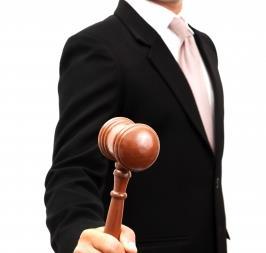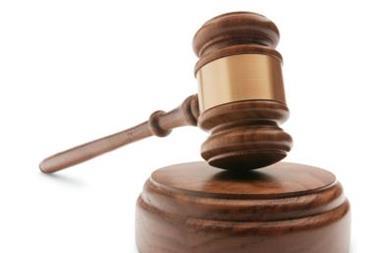The EU has implemented a series of regulations to tackle work-induced hearing loss over the past few decades, so why are deafness claims on the rise?

In 2003, the EU adopted directive 2003/10/EC on the minimum health and safety requirements regarding the exposure of workers to physical agents (noise. This requires that “the risks arising from exposure to noise shall be eliminated at their source or reduced to a minimum” and sets a maximum daily exposure limit of 87dB(A). Member states had until February 2006 to transpose it into national legislation.
Machinery and equipment manufacturers also have a duty to reduce noise levels. Under Directive 98/37/EC, machinery should be “designed and constructed [so] that risks resulting from the emission of airborne noise are reduced to the lowest level”.
Still, one in five workers in Europe is said to have to raise their voice to be heard for at least half the time they are at work and many suffer from work-related hearing difficulties. Noise-induced hearing loss is the most common occupational disease in the EU, and deafness claims make up the largest proportion of occupational disease claims, particularly in the UK.
Claims have historically come from the manufacturing, construction, extraction, energy and water sectors, and these still account for most claims and claimants. However, other professions, such as bar and club work, agriculture and printing, are increasingly said to be damaging hearing.
The legislative framework implementing the directives varies between jurisdictions. This article therefore focuses on the UK as typical of the manufacturing base found elsewhere in the EU.
Noise down, claims up
The directives were implemented in the UK through the Noise at Work Regulations 1989 and the Control of Noise at Work Regulations 2005. There has also been a drive by plant and equipment manufacturers to eliminate or reduce noise. This should have resulted in UK workplaces being less noisy than in the 1970s and 1980s – so why are deafness claims on the rise?
One explanation is that allowing claimants’ solicitors to pay referral fees to claims management companies created a claims market. Furthermore, road traffic accidents and other claims have become less lucrative, and pleural plaques is no longer a compensatable injury in England and Wales, so deafness claims are seen as an attractive alternative. Relatively straightforward successful claims could attract a success fee for lawyers of 62.5% or more on top of base profit costs.
In addition, the current pre-action protocol on disease and illness cases allows claims to be presented without formal proof of employment or initial evidence that noise exposure caused the hearing loss complained of.
Under the 2005 regulations, which came into force in April 2006, employers have to eliminate the risk of exposure at source and, where this is not reasonably practicable, to reduce it to a minimum. This obligation to address the problem at source by preventing noise rather than by preventing exposure through personal protective equipment is often overlooked. Use of hearing protection should be the last resort.
Action levels are set by reference to personal noise exposure. At 80dB(A), information and training must be provided about noise and risk, hearing protection must be available and health surveillance in the form of hearing tests must be implemented. A level of 85dB(A) requires hearing protection zones and the use of hearing protection. Many viewed the 2005 regulations as a step too far. Risk of injury at 80db(A) to 85dB(A) is small, but action levels are unlikely to be reduced soon.
Nonetheless, exposure seems to have reduced. Many claims involve allegations of exposure after April 2006, but far more involve allegations of historic exposure when employers fell under the less demanding regime of the Noise at Work Regulations 1989. For exposure before 1990, claims fall under the common law duty of care, which is governed by the recognised standards of the day. In 2011, the Supreme Court (in Baker v Quantum Clothing Group) rejected an attempt to impose retrospective interpretation of what was ‘safe’ with respect to historic exposures. Generally, exposure above 90dB(A) will attract liability pre-1990, in line with guidance in publications such as Noise and the Worker (a 1963 Ministry of Labour publication) and the 1972 Code of Practice from the Department of Employment.
Procedural aspects/investigation
Some new employers’ liability deafness claims brought after 30 July 2013 will enter the Claims Portal, which is now the main process for handling personal injury claims of up to £25,000 (€29,300), but only if a single defendant is being pursued (these claims are likely to be the minority in deafness cases). If the portal is used, employers and their insurers have six weeks to investigate and make an admission if the claim is to stay within the portal. The portal is designed for accidents rather than disease claims, which creates inherent diffi culties. Another problem is that the claimant would not have served any medical evidence before the six weeks had expired, which would mean that causation could not be considered properly.
If the claim is outside the portal, because it: (i) was started on or before 30 July 2013; (ii) is excluded from the portal; or (iii) has dropped out of the portal, employers and their insurers have three months from the date the claim is made to investigate, decide on liability and produce documentation if a denial is raised. If the claim was entered but dropped out of the portal, this period is three months from when the claim entered the portal. Meeting this deadline can often be difficult, but failure to do so can result in court applications for disclosure of documents and cost penalties.
On receipt of a claim, employers should look at personnel and occupational health files, as well as historic noise surveys for the area(s) in which the claimant worked. Noise records should be maintained and kept. Not only is this a requirement under the regulations, but case law states that if the obligation to undertake noise surveys arises and the defendant cannot produce records, adverse inferences as to the fact and the level of the claimant’s exposure may be drawn: see Keefe v Isle of Man Steam Packet Co [2010] EWCA Civ 683.
Consideration should also be given to historic audiograms for that claimant. Unfortunately, many employers have failed to implement proper health surveillance. An audiogram taken at the beginning and end of employment can be invaluable. Best practice also dictates that employers ought to take a full history of noise exposure from all incoming employees and undertake audiometric testing. Audiometric surveillance is a requirement under the 2005 regulations.
Historical records
Documentation aside, employers should also be aware of the complexities of legacy claims. Claimants often bring claims related to exposures that ceased many years previously. The employing company may no longer exist and a successor or parent may be in the firing line.
The Transfer of Undertakings (Protection of Employment) Regulations (TUPE) can result in transferred liability for the actions of other companies if a business has been sold and employees transferred. Parent companies should not assume that they have no liability for the actions of defunct subsidiaries. Tracing the actual employing company can often be far from straightforward.
Medical causation is another important issue. A loss exceeding that expected from ageing does not necessarily imply noise damage. Typically, noise-induced hearing loss will show up on an audiogram in the form of a notch or bulge in the higher frequencies. If an audiogram broadly follows that pattern, noise exposure may partly have caused the hearing loss. However, many claims do not meet the diagnostic criteria and are rejected by insurers on that basis.
If hearing records and noise surveys are not available, the employer’s case could be prejudiced by any delay in the presentation of the claim. Under the Limitation Act 1980, a claimant has three years to issue proceedings from the date on which they had knowledge of their claim. The Court of Appeal has recently ruled that hearing loss sufferers should have asked their doctor about the cause of their condition. Ignorance as to the potential cause of hearing loss will not prevent the limitation clock from ticking if a reasonable person would have enquired about it.
Deafness claims often involve multiple insurers. In such instances, a lead insurer should take the reins to investigate and co-ordinate the various contributing parties.
Tracing historic cover can also be problematic. Employers often fail to maintain their employers’ liability records or may find themselves liable under TUPE for the actions of a previous employer. The creation of the Employers’ Liability Tracing Office has eased this problem, but its records are not comprehensive.
Although individual deafness claims are not costly in terms of damages or costs, the overall fi nancial burden is significant because of the number of claims. High rejection rates are testament to the fact that many claims are baseless, but fighting them is still a drain on time and resources for employers and insurers. It is hoped that recent changes to claims funding and the level of cost recoverability will help reduce this.
Ian Macalister is a partner in DWF’s insurance team
Removal of strict liability under the Health and Safety at Work Act 1974
Under recent changes to the Health and Safety Act for diseases and accidents caused by employer actions that occurred after 1 October 2013, claimants will have to prove that their employer was negligent. They will no longer be able to rely on breaches of health and safety measures under the 1989 and 2005 regulations. In the case of a disease, if the exposure occurred both before and after 1 October 2013, the regulations will apply only to the exposure that occurred before that date. It will, therefore, be a while before we see a deafness claim for an exposure that occurred after 1 October. Some claimants may, however, argue that employers should adopt, as part of their common law duty of care, some of the measures referred to above.




















No comments yet